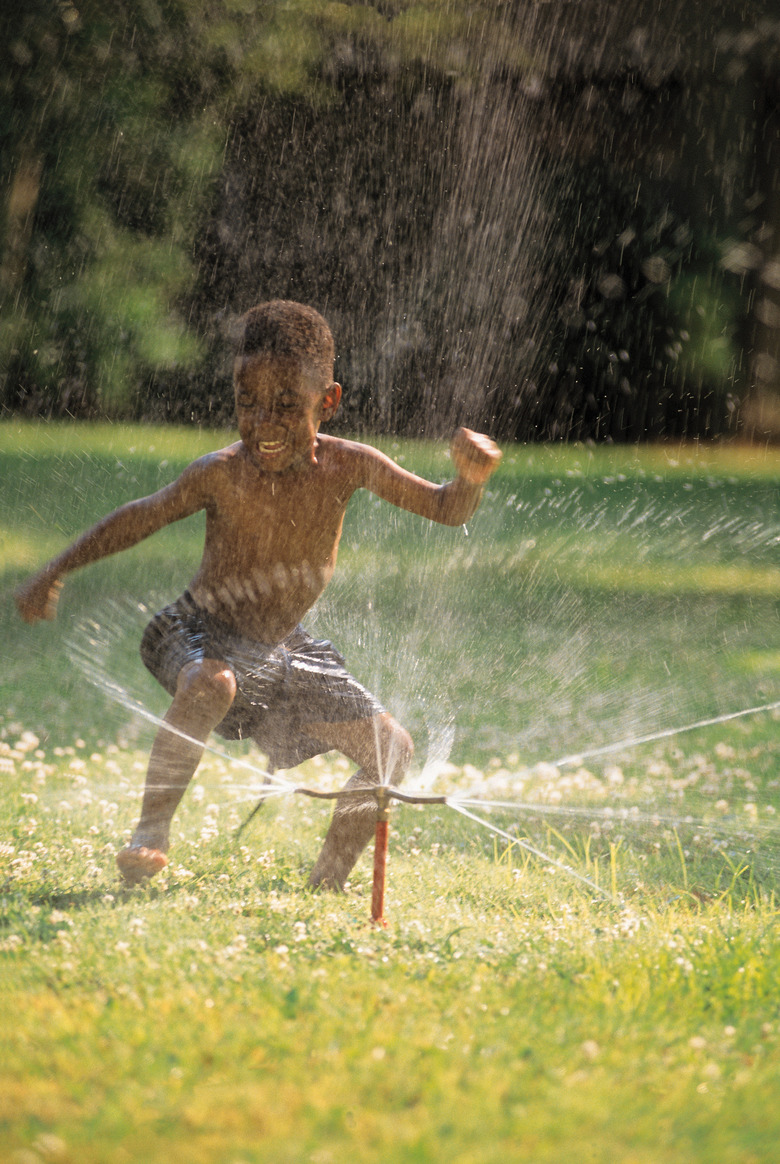What To Check For When One Sprinkler Stays On All The Time
Sprinklers can make your busy life easier and less stressful by providing automated water delivery to your landscape, but only if they work properly. If you've noticed a sprinkler that consistently fails to shut off or continually leaks, there could be a variety of factors at play. The solution could be as simple as resetting the sprinkler timer's program, or it may require some real hands-in-the-dirt sleuthing.
Check the Controller
Step 1
The first step is to check the sprinkler timer, the computerized controller, to ensure the program doesn't think one sprinkler is supposed to be on all the time. Reset this if necessary. If you don't see a problem in the timer program, try turning the controller off and seeing if the sprinkler stops. If not, you have a mechanical issue somewhere in the system, and you will need to shut the water off at the source before investigating the sprinkler valves. If possible, avoid unplugging or disconnecting the controller, as this may mean you have to reset the whole program.
- Sprinklers can make your busy life easier and less stressful by providing automated water delivery to your landscape, but only if they work properly.
- If not, you have a mechanical issue somewhere in the system, and you will need to shut the water off at the source before investigating the sprinkler valves.
Verify the Valves
Step 1
Valves must be intact in order for them to pop up and shut down normally, so if the plunger is sticking that could be an indication that the valve is broken or an internal crack is stopping the plunger from closing down. The diaphragm underneath the valve cover must be intact, or it could leak. Check not only for large tears, but also for small scratches and pinholes, which can cause significant leaking if they go undiscovered.
Dig for Debris
Step 1
Unfortunately, many types of debris may infiltrate sprinkler systems, causing problems. This may be as simple as dirt or small rocks, or include larger debris such as nuts, bolts, glass or unidentifiable objects. If the valves seem like they're operating normally, inspect for visible debris. If you don't find any but the valve still won't shut off, you can try turning the sprinkler system on and off a few times, which may dislodge debris from the valve and allow it to shut down. If this doesn't work, you might have to dig down, uncover the valves, and open them up to see if anything is stuck in them. Be careful when doing so that you only remove a little soil at a time, and don't impact sprinkler valves with sharp trowel or shovel points. Wear gloves to protect your hands from soil debris or broken parts.
- Valves must be intact in order for them to pop up and shut down normally, so if the plunger is sticking that could be an indication that the valve is broken or an internal crack is stopping the plunger from closing down.
- If you don't find any but the valve still won't shut off, you can try turning the sprinkler system on and off a few times, which may dislodge debris from the valve and allow it to shut down.
Figure Out Flow Rates
Step 1
If you have checked the controller carefully and found nothing, and inspected the valves and they appear to be functioning normally without any obstruction, the problem may be your water flow. The water flow rate, which is measured in gallons per minute, must be strong enough to create a noticeable change in pressure so that the valve responds when you shut water off. Check the specifications for your sprinkler system, and then add more sprinkler heads to increase the flow if necessary, or install low-flow heads.
